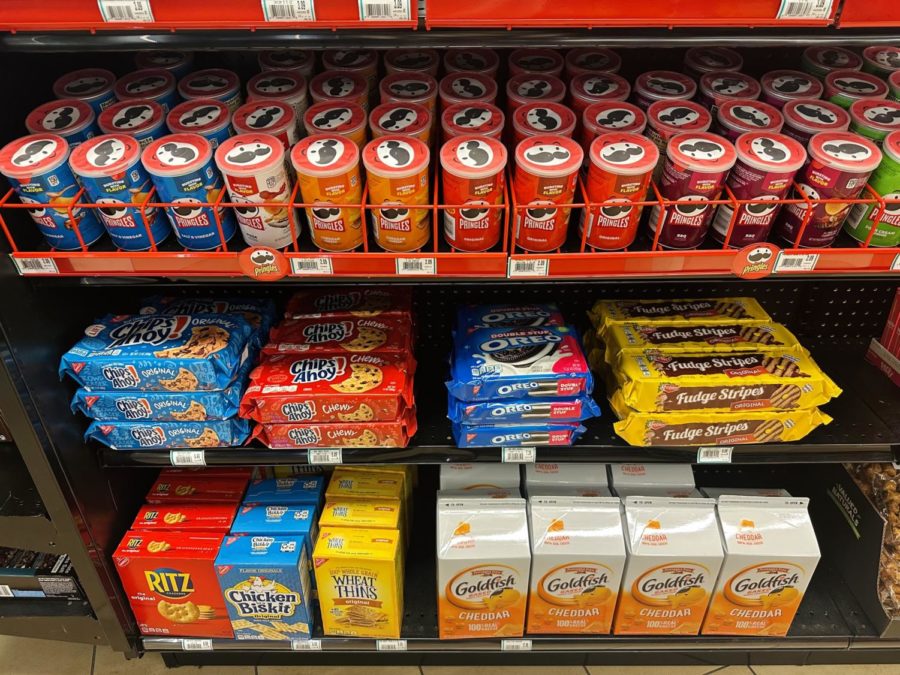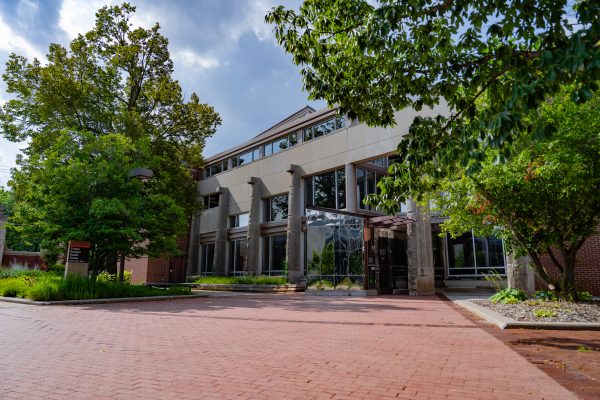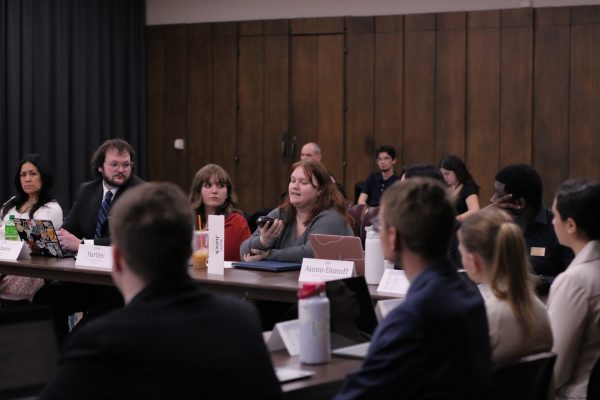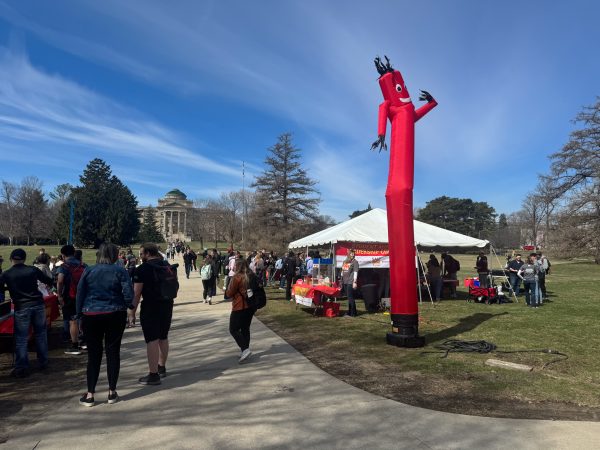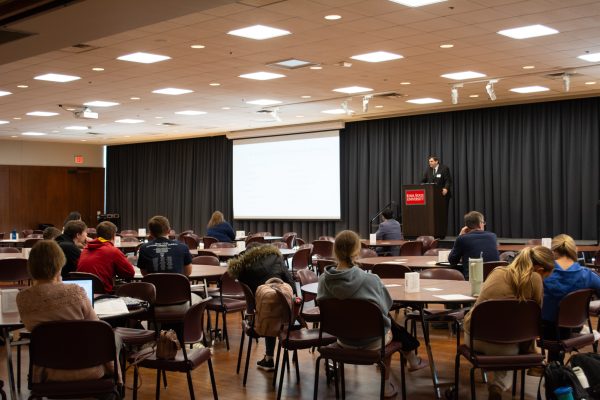Students debate the pros and cons of buying food on campus
The current price for a 30 oz box of Pepperidge Farm Goldfish Cheddar Cheese Crackers from CVS is $11.29. This can be compared to the same item located in a campus convenience store priced at $12.99.
On a warm sunny day, the idea of purchasing a cool drink to go often leads to an easy decision. However, choosing where to purchase the drink can make this decision a little more complicated.
Iowa State has four university-owned convenience stores located on campus. Although these stores sell products that students and faculty may be looking for, there are off-campus stores that challenge buyers on where to purchase their items.
A big factor in where students buy their food has to do with comparing prices between on-campus and off-campus stores.
“Even when we price compare, we are going to look at what other places are charging,” said Kristi Patel, associate director for retail operation at Iowa State. “Maybe it’s something we’re going to make more money off of just because you can, just because that’s what the market will bear. Then there’s going to be other things that we’re not going to make as much off of them.”
Patel shared that by looking at components like coffee shops around town, she can use those prices to help establish prices for on-campus convenience stores.
“Because we have a Starbucks on campus, we try to be competitive with those prices,” Patel said. “One thing that’s different is we don’t charge tax, so when we look at those prices, if you were to go out and check, they might not be 100% the same.”
Even without tax, some students, like Lily Debold, a freshman studying elementary education, feel that going to the off-campus Starbucks is still a more affordable option.
“I prefer going to the Starbucks off campus because when talking about prices, there’s a bit of a difference,” Debold said. “Depending on what you get, the prices on campus can be more expensive than just going to the one off campus, and I definitely would rather save money.”
With cost as a large factor in many decisions regarding purchases, sometimes convenience is prioritized on top.
“Based on convenience, the [Starbucks] on campus is better,” Debold said. “It is close to my classes and is very easy to get to when I decide last minute.”
The ability to grab an item on the go plays a role in what locations receive the best business, and others students feel that campus locations provide this convenience, including Denny Dang, a sophomore studying electrical engineering.
“I think stores within campus slightly have an edge over stores in Campustown because of the foot traffic difference,” Dang said.
However, Dang’s personal preference on where to purchase food does not include on-campus locations because convenience is not what he prioritizes.
“I would prefer to go off campus to get snacks because of how much cheaper it is than on campus, which is usually because it’s more convenient and close by,” Dang said.
Patel shared that price comparing occurs annually, at least once or twice per year. She said emails are also often sent with requests to bring in a specific product to the on-campus stores.
Patel said there are efforts to see if someone’s request is something they can source and get to their consumers. However, sometimes it is still insufficient for what students are looking for.
“There are a lot more less expensive options off campus where I can get what I need, and I think there’s a wider variety of healthier options off campus which I also prefer,” said Hung Tran, a freshman studying mechanical engineering.
The current price for a 30-ounce box of Pepperidge Farm Goldfish Cheddar Cheese Crackers from CVS is $11.29. This can be compared to the same item located in a campus convenience store priced at $12.99.
It can be easy to forget the fact that on-campus stores do not charge tax, but even that factor does not stop students, like Caera Pellikan, a freshman studying elementary education, from choosing to purchase items off campus.
“Personally, even though I don’t have a car, I would definitely go off campus to purchase snacks,” Pellikan said. “At the convenient stores on campus I feel like the prices there are super high for the amount you get, and I don’t think it’s worth it.”
Students often do not choose one option or the other because convenience and cost are prioritized depending on the situation’s context.
“I think students use on-campus stores to get a quick snack on the go, but use off-campus stores to grab larger portions of snacks to keep at their dorms,” said Mikayla Paek, a freshman studying interior design.
When it comes to pricing items at different locations on campus, Patel shared that there are different factors to balance including the food costs, the labor, industry standards and what other people in the community are doing.
“If we’re pricing a bag of potato chips or like a candy bar or something like that, the food cost on that item will be a percentage wise higher, and we will make less of a margin on that item because we don’t have as much labor,” Patel said. “We’re receiving that box of candy, and we’re putting it on the shelf.”
Pricing on campus also has to do with larger industries that have the buying power that campus stores do not always have.
“We try to be pretty competitive within the convenience store industry, but we also don’t have the buying power of a Casey’s or a Kum & Go, and a lot of people try to compare us to Walmart or even Hy-Vee,” Patel said.
Your donation will support the student journalists of the Iowa State Daily. Your contribution will allow us to purchase equipment, send our student journalists to conferences and off-set their cost of living so they can continue to do best-in-the-nation work at the Iowa State Daily.


